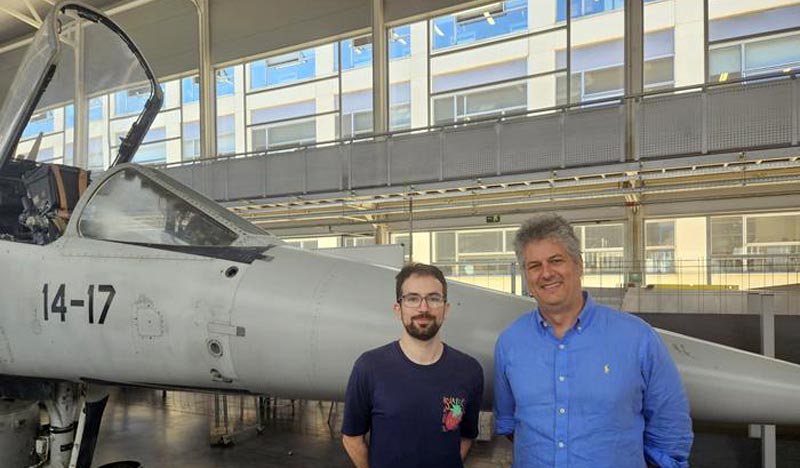

Andres Cremadades and Sergio Hoyas (UPV)
Credit: UPV
A team from UPV participates in developing a new technique that allows studying turbulence in a completely different way from that used in the last 100 years.
When we mention turbulence, the first association that springs to mind is often the uncomfortable jostling experienced during airplane travel. However, turbulence encompasses far more than just that; it’s a continuous presence in our daily lives. This term denotes the irregular and chaotic behavior exhibited by fluids, gases, and liquids in a wide array of scenarios. Think of the swirling air in our cities, the waters of seas and rivers, or within engines and around vehicles like cars, ships, and airplanes. Actually, turbulence is as a significant factor in energy dissipation within these modes of transportation, accounting for up to 15% of the annual CO2 emissions generated by humanity.
Now, an international team composed of scientists from the Universitat Politècnica de València and the universities of Edinburgh and Melbourne, led by Ricardo Vinuesa from the Flow Institute of the Royal Institute of Technology, KTH, has developed a new technique that allows us to study turbulence in a completely different way from that used in the last 100 years. Their work has been published in Nature Communications.
The main difficulty of fluid mechanics is that “although the equations of fluid mechanics are about 180 years old, the problem remains open. These equations are unsolvable algebraically or numerically for practical cases, even for the world’s largest computers. For a typical jetliner, we would need a memory equivalent to a month of the internet just to configure the simulation,” indicates Sergio Hoyas, professor of aerospace engineering at UPV and researcher at IUMPA. “We need to understand turbulence to improve the simplified models used in daily life. And there is a new tool: artificial intelligence,” adds Ricardo Vinuesa.
Although several works already apply artificial intelligence to fluid mechanics, the great novelty of this study is that it allows, for the first time, not to simulate or predict but to understand turbulence.
From a database of about one terabyte, the researchers trained a neural network that allows for the prediction of the movement of a turbulent flow. Using this network, they have managed to track the evolution of the flow by individually removing small structures, subsequently evaluating the effect of these structures using the SHAP algorithm.
“The most important thing is that the results of this analysis exactly match the knowledge acquired in the last 40 years and extend it. Our method has managed to reproduce this knowledge without the neural network knowing anything about physics,” emphasizes Andrés Cremades, a postdoctoral researcher at KTH and the article’s first author.
“Experimental validation with data from the University of Melbourne indicates that our method applies to realistic flows and opens up a novel path for understanding turbulence,” Vinuesa concludes.
Journal: Nature Communications
DOI: 10.1038/s41467-024-47954-6
Method of Research: Meta-analysis
Article Title: Identifying regions of importance in wall-bounded turbulence through explainable deep learning
Article Publication Date: 13-May-2024
Media Contact
Luis Zurano
Universitat Politècnica de València
ciencia@upv.es
Office: 34-963-877-842 x71038












